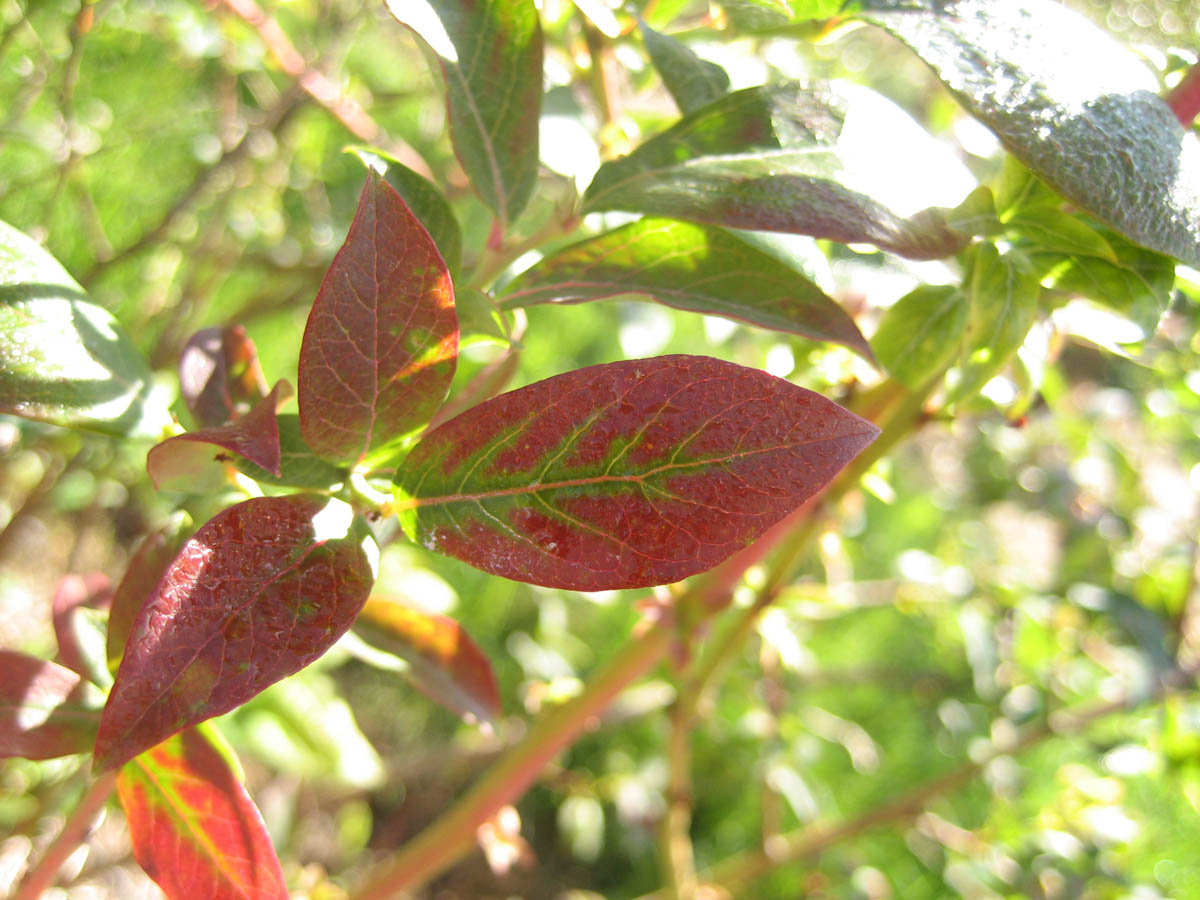Contact Spray Injury:
Berries may have rough textured, brown scar lines on the surface (russetting). Damage may be caused by various pesticide, fertilizer and/or adjuvant sprays.

Russetting Spray InjuryCarolyn Teasdale, BCAGRI

Spray Injury Chateau DriftMark Sweeney

Spray Injury Chateau DriftMark Sweeney
Drought Injury:
Leaf margins turn brown and dry following hot weather and inadequate irrigation.

Drought Heat DamageCarolyn Teasdale, BCAGRI
Fertilizer burn:
Leaf margins turn brown and dry. Plants may be killed. Young plants are most at risk from excess fertilizer placed too close to the crown.

Fertilizer BurnMark Sweeney
Glyphosate (Roundup) Injury:
Young leaves become small, strap-like, deformed and yellow. Damage is most severe in the spring following exposure to glyphosate spray the previous fall.

Glyphosate (Roundup) InjuryMark Sweeney
Green Fruit Drop (GFD):
Extensive GFD has only been observed in ‘Draper’ and is related to insufficient allocation of calcium under the Fraser Valley’s climatic conditions. Fruit sets and develops normally until just before turning blue when it suddenly drops from the bush over the course of a week or two. The dropped fruit are brown inside while the fruit that remain on the bush are perfectly normal to all appearances. It is only seen in some fields and in some years and to varying extents within fields, not being exclusively linked to a particular soil type but manifesting more commonly under high vigour conditions.

Green Fruit Drop Missing Fruit From ClustersEric Gerbrandt, UFV.

Green Fruit DropEric Gerbrandt, UFV.

Green Fruit Drop InternalMark Sweeney

Green Fruit Drop InternalEric Gerbrandt, UFV.
Hail Damage:
Leaves are shredded. Flowers may fall off prior to pollination. Berries have small, indented, brown scars that remain visible as the berries ripen.

Hail Damage LeavesCarolyn Teasdale, BCAGRI

Hail Damage BerriesCarolyn Teasdale, BCAGRI
Iron Chlorosis:
Growth is stunted. Leaves, starting from the shoot tips, are small and yellow with green veins. Condition occurs when the soil pH is above 5.5, causing iron to become unavailable to the plant.

Iron ChlorosisKarina Sakalauskas, BCBC

Iron ChlorosisCarolyn Teasdale, BCAGRI
Magnesium Deficiency:
Older leaves turn red between the veins. Leaf centres remain dark green along the veins resulting in a “Christmas tree” pattern on the leaves.

Magnesium DeficiencyCarolyn Teasdale, BCAGRI
Nitrogen Deficiency:
Growth is stunted. Leaves are a uniform pale green and may turn red prematurely in late August. Condition is often seen on young plants where sawdust mulch has been applied. The mulch can tie-up some of the available nitrogen in fertilizer, causing it to be temporarily unavailable to the plant. As the mulch breaks down, the nitrogen is released and becomes available to the plant once again.

Nitrogen DeficiencyMark Sweeney
Phenoxy (2, 4-D, MCPA):
Herbicide-injured leaves may be twisted and distorted, with serrated margins.

Phenoxy (2, 4-D, MCPA)Mark Sweeney

Phenoxy (2, 4-D, MCPA)Mark Sweeney

Phenoxy HerbcallusMark Sweeney
Poor Pollination:
Berry size is uneven. At petal fall, poorly pollinated berries are small, flat and reddish in colour. Fruit may drop shortly after bloom. Poor pollination occurs when there are insufficient bee visits during bloom. This may be caused by cool, wet weather during bloom or inadequate bee numbers.

Poor PollinationMark Sweeney

Poor PollinationMark Sweeney

Poor PollinationMark Sweeney
Rain Splitting:
Berries swell and the skin cracks, exposing the green flesh of the berry. Split berries can quickly become infected with fruit rot. Splitting occurs when heavy rains occur at the ripe berry stage.

Rain SplittingCarolyn Teasdale, BCAGRI
Spring Frost Injury:
Developing shoots and flower clusters suddenly wilt, turn brown and die. Frost damage may affect individual pink tip buds in a cluster or just the centre leaf in a vegetative shoot. Bacterial blight may develop on damaged tissue. Low field areas are most at risk.

Spring Frost InjuryCarolyn Teasdale, BCAGRI

Spring Injury VegetativeMark Sweeney
Sun-scald:
Berries develop a pinkish-grey soft, sunken patch on the side exposed to the sun, usually the south side. Damage occurs after a period of extreme summer heat.

Sun ScaldMark Sweeney
Winter Damage:
Individual flower and leaf buds turn brown and fail to develop. One year-old branches may be killed from the tips back. Extreme cold in late fall/winter occurs before plants enter full dormancy or during late winter after plants have broken dormancy.

Winter DamageMark Sweeney

Winter DamageCarolyn Teasdale, BCAGRI